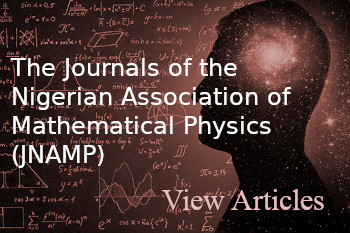AN APPLICATION OF NONPARAMETRIC STATISTICAL TECHNIQUES IN DETERMINING THE MOST PREFERED NETWORK PROVIDERS IN NIGERIA
Keywords:
ETISALAT, GLO, AIRTEL, MTN, Sample Survey, Nonparametric StatisticsAbstract
Over the years, the improvement made by the different network providers in Nigeria has not satisfactorily met the customers' communication needs as there is a barrage of complaints of poor service in different network providers. As a result, the need to evaluate the quality of GSM received signal strength of the different mobile network providers, this study aimed at assessing the most essential and preferred network provider in the country. The data used were collected via student’s opinions at the case study, Kaduna Polytechnic. The Mann – Whitney U test, Kruskal Wallis test, Chi-Square tests of independence, and Correlation analysis were applied for the analysis. The result from Mann – Whitney U test shows that there is no significant difference in the average number of usages of bandwidth types. Thus, from the rank’s column, it was observed that Gigabytes has the highest average rank as an indication to the majority of the population subscribed to Gigabytes than megabytes, the Kruskal Wallis U Test result, indicates that there is a significant difference in populations’ preference of network provider for the bandwidth’s subscription. Similarly, the average rank column of the Kruskal Wallis U Test shows the MTN with the highest mean rank, placed as the most preferred network by the population of the study. Correlation and chi-square test resulted in a positive significant
relationship among the network providers at the national level.
Downloads
References
Nigerian Communication Commission (2017) Active telecoms subscribers slide by 2.11% in April.
Draper N. R and Smith H. (2017), Applied Regression Analysis (2ndEd) John Wiley and Sons, Inc .p. 93 ISBN9780471170822.
Adeleke A.and Aminu S.A (2012), the determinants of customer loyalty in Nigeria's GS Mmarket International Journal of Business and Social Science, 3(14)209-222.
Dennis A. and Justie O. (2019), Comparative strategies and customer satisfaction in the telecommunication industry in Nigeria (2019); ISSN:2052–6407
Okeke P. (2014), Factors influencing the choice of GSM Network among oil and Gas Workers in Port Harcourt, Nigeria. IntJ Emerging Knowledge 2:8-22
Andah J. (2019), NCC reveals the number of GSM subscribers in Nigeria, Concise News Retrieved from https://www.concisenewsglobal/2019/03/02/ncc-reveals-number-of-gsm-subscribers-in-nigeria
Abubakar A. (2014), Assessing the Effects of Mobile Number Portability on Network Service in Nigeria in 2013. Abubakar's Talk space.
Fajewonyomi T.E (2007), acomparative study of the network performance of GLO and MTN in Nigeria.
Omorogiuwa. O and Edeko F.O (2009); an Investigation and modeling of power received at 1800MHZ in mountain Terrain, using Glo network and the net monitor.
Olasunkanni F.O, SegunI. Petal. (2014); Evaluation of the GSM signal strength in terms of network service bar.
James L. et al (2021), Complete Dissertation By Statistics Solutions, www. Statistics solutions.com
Aliyu U. (2011), Statistical Method for Biometric and Medical Research ISBN978–030–695–1.
Downloads
Published
Issue
Section
License
Copyright (c) 2024 The Transactions of the Nigerian Association of Mathematical Physics

This work is licensed under a Creative Commons Attribution-NonCommercial-ShareAlike 4.0 International License.




